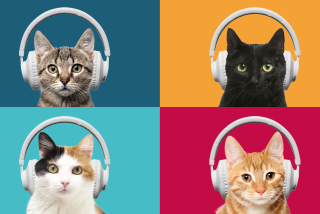Free Online Access Gives Rise to Debate on Strategies
- Share via
Two years ago, the question was whether free Internet service providers could survive in the shadow of pay-for-access king America Online. But most Internet analysts now agree that no-fee providers are here to stay, and the debate has shifted to which business model is likely to succeed.
Two distinct strategies have surfaced in the free-access world. Westlake Village-based NetZero Inc. is spending heavily to create its own brand. Sunnyvale, Calif.-based Spinway Corp. is providing access that’s marketed by the online arms of such familiar brands as Kmart, Costco and Ace Hardware. And some providers, most notably Juno Online Services Inc., are placing bets in both camps.
Time will tell which business model will succeed.
Pay-for-access providers maintain that free-access subscribers get what they pay for in terms of frequent busy signals and delays in receiving help when problems surface. But 6.2% of Internet users now use free services to log on, and that percentage could swell to 13% by 2003, according to Jupiter Communications.
NetZero Chairman and Chief Executive Mark R. Goldston uses another measure of consumer interest in free access: Most of his company’s 5.7 million registered members use pay services--including AOL and Earthlink--to download necessary software.
“When we came out as a pioneer in 1998, everyone looked at us like we were crazy,” said Goldston, a former chief executive at Einstein/Noah Bagel Corp. “But when we started to get real traction, a lot of people started to think they should get into this space.”
*
Nothing is for free, online or off. No-fee ISPs must sell plenty of advertising to pay phone bills and market their service. Consumers complete lengthy forms before they can sign on, and ISPs use the wealth of demographic data to help sell advertising. The ads stay on users’ screens whenever and wherever they surf.
Offering free Internet access is still a risky business, as Federal Way, Wash.-based Freei Networks proved in October when it tumbled into Bankruptcy Court. Freei, which used a high-profile ad campaign featuring Shaquille O’Neal, lost $19 million during 1999 on just $983,000 in revenue. The company abandoned its planned public offering in October, just days before filing for bankruptcy.
One of Wall Street’s biggest concerns is whether ISPs can sell enough advertising to turn a profit. During a typical month before it filed for bankruptcy, Freei made more than 1.3 billion ads available to its 2.2 million subscribers.
In addition to ISPs, there are countless other Web pages on which to advertise. The glut is driving a fire-sale “mentality . . . among underfunded companies that, in a desperation move, are giving away their inventory,” Goldston said.
Free ISPs face other potential dangers. Telecommunication costs can soar when ISPs attract hard-core surfers. More than half of the telecommunications costs in the free-access side of Juno’s business are driven by 5% of subscribers who are heavy users. Juno is now trying to shift those users to pay services.
At some point, ISPs must address costly questions associated with growing demand for broadband access and wireless devices. Consumers could get their hands on software that wipes ads from the screen. And there’s always a chance market leader AOL may flex its muscles by forming its own free service.
Goldston is adamant that Freei’s failure doesn’t signal a structural flaw in NetZero’s free-access business model. “Put a check by what we did right, and you’ll see everything that they did wrong,” Goldston said. “They’re not a case of a great company running out of gas.”
*
NetZero acquired Freei’s domain names, including Freeinternet.com, through Bankruptcy Court. When 2.2 million Freei subscribers sign on, they’re shifted to NetZero’s home page and offered continued free access in return for completing NetZero’s application form.
Some analysts say NetZero faces a tougher challenge from Spinway and other competitors that operate ISPs for such companies as Kmart, which can spend freely to establish online brands. Spinway has drawn venture capital from Al Shugart International, Deutsche BancAlex. Brown and Softbank Venture Capital.
The opportunity to build a new free ISP brand name “has passed us by,” said Jupiter Communications analyst Dylan Brooks. “The real opportunity to distribute to consumers is by leveraging the brand affiliation of well-known companies.”
Spinway founder and Chief Software Architect Danny Robinson says there’s no need for a free ISP provider to spend heavily to build a brand when there are plenty of well-known brands trying to build an online presence. He also characterizes Spinway as an “advertising and marketing vehicle” rather than an ISP.
“We started the company to solve the problem of how to advertise on the Internet,” said Robinson, who recently turned over the chairman and chief executive titles to former Sunset Publishing executive Stephen Seabolt. “Free Internet access is something we use to build advertising and marketing reach.”
Co-branded ISPs are offered by such disparate entities as the Simpsons, E-Trade, Ace Hardware and Kmart. The deals are structured to give both sides an advantage. The Fox Network, for example, gets an attractive premium that cements viewers to its Web site. The ISP enjoys access to a wealth of demographic data.
Spinway hopes to turn a profit by selling advertising across all the co-branded programs it administers. Spinway’s business model mirrors programs credit card issuers use to lure consumers by linking their cards to causes or favorite companies. More than half the credit cards now issued carry some form of affiliation--perhaps with an airline or a pro sports team.
“It’s all about how long you can get the consumer to stick with your program,” said James Accomando, a Fairfield, Conn.-based credit card consultant. “It doesn’t matter how many credit cards you have in your wallet. Only one or two will get used. The hope is that these programs give you an emotional tug--or a tangible reason--to pull one of those cards out.”
Brands are important in the free-access sector because consumers are likely to download programs from more than one provider. Wall Street also looks past the total number of registered users to see how many consumers are going online. NetZero, for example, had 5.7 million registered users in September, but only 2.3 million went online that month.
NetZero and Spinway both maintain their business models will optimize revenue. Goldston said his company will survive because it retains rights to all forms of advertising. He argues that Spinway’s co-branding deals will prove to be too expensive. Spinway counters that it can collect a wide range of subscribers by operating services for such marketers as Kmart, Ace and Barnes&Noble.com.;
Both companies have high-profile marketing agreements. NetZero sponsors the NBA halftime show during NBC broadcasts. Qualcomm has invested $144 million in NetZero, and General Motors signed a multiyear marketing agreement. Spinway offers a free-access feature on some Hewlett-Packard computers, and has signed high-profile marketing agreements with Yahoo.
*
Free access, though, remains a risky business. In a Securities and Exchange Commission filing for its ill-fated IPO, Freei noted that “our business is difficult to evaluate because we have an extremely limited operating history and our free Internet service provider business model is unproven.”
NetZero on Nov. 1 reported that revenue rose by 113% to $16.5 million during its third quarter ended Sept. 30. The firm had a net loss of $28.9 million, compared with a $26.9-million net loss during the same period in 1999.
NetZero’s shares tumbled more than 90% in 1999. Goldston said investors are unduly punishing NetZero shares. “The stock drop is almost numbing,” Goldston said. “We have a fantastic growth rate, $220 million in cash and no debt. We’re one of the 10 best-known brands on the Web.” NetZero shares closed unchanged at $1.63 on Nasdaq.
(BEGIN TEXT OF INFOBOX / INFOGRAPHIC)
Free or Not?
Most Americans continue to pay for services such as America Online, which has a reach of 56.4%. But free-access providers continue to grow in popularity. NetZero Inc. is spending heavily to set itself apart, yet its stock is fizzling.
*--*
% of unique Web site ISP users Juno.com 6.2%* NetZero.net 2.6 Freeinternet.com** 2.3 1stup.com 1.4 Redrival.com 0.8 Lineone.net 0.8 Afn.org 0.4 Freewwweb.com 0.3 Address.com 0.2 Dotnow.com 0.1 Buzzlink.com 0.1 Eircom.net 0.1
*--*
* Based on both paid and free subscriptions
** Filed for bankruptcy Oct. 6
Source: PC Data
*
NetZero shares on Nasdaq, monthly closes and latest
Wednesday: $1.63, unchanged






